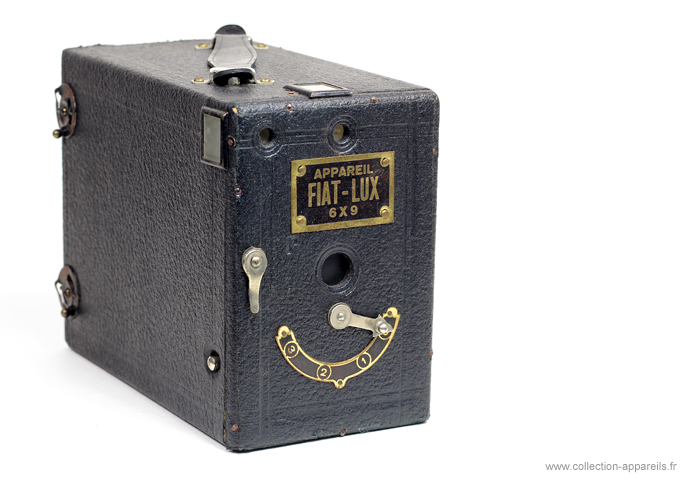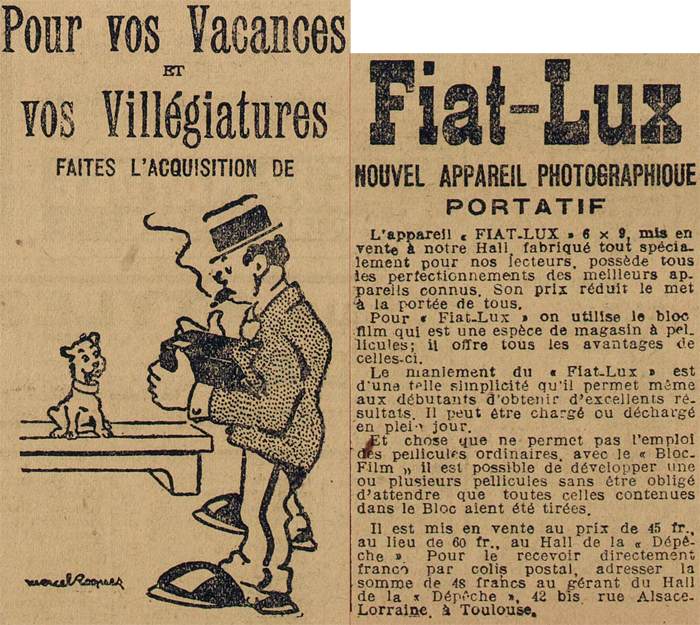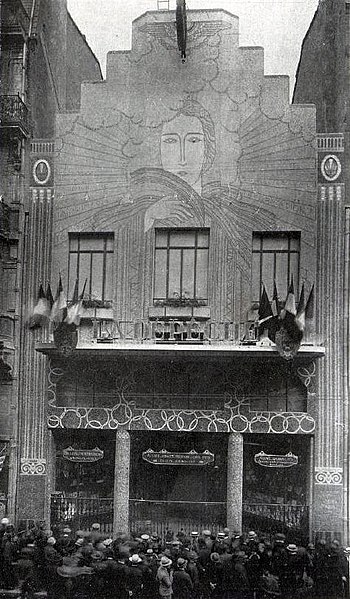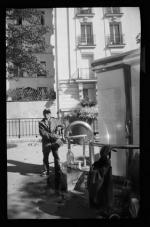|
La Dépêche Fiat-Lux |
Manufactured or assembled in France from (Circa) 1927 to (After) 1927.
Index of rarity in France: Rare (among non-specialized garage sales)
Inventory number: 14439
See the complete technical specifications
Chronology of cameras La Depêche
Ce Box était vendu exclusivement dans le hall du nouvel immeuble du journal La Dépêche, inauguré en 1927. Il ne porte aucune indication de marque ou de modèle.
Différentes caractéristiques permettent de l'attribuer à Natali, Collo et Compagnie. La locution latine Fiat Lux (Que La Lumière Soit) est une invitation à "jouer avec la lumière" en prenant des photos et à ramener des souvenirs des vacances.
L'appareil doit être chargé avec un Pack-Film au format 6 x 9 de douze plans film. Son utilisation est des plus simples, on choisit la pose ou l'instantané et une des trois valeurs de diaphragme puis on déclenche.
La Dépêche du Midi, plus communément appelée La Dépêche, est un journal régional français diffusé dans dix départements du sud-ouest de la France.



Natali, Collo & Company was the name of a subcontracting manufacturer, not a commercial brand of cameras. All the production was sold under more well-known brands like Manufrance, Plavic, etc. These were distributors or players in the photography market who aimed to add affordable cameras to their catalog.
The cameras manufactured by Natali and Collo were of the Box or Detective type, as the materials used were not suitable for other forms. The wood used was lightweight and not very durable. The covering was limited to decorative paper glued to the wood, which over time tended to wrinkle. Some unusual features for the time are worth noting, such as imitation reptile skin in blue color.
The manufacturing quality was low in order to produce budget cameras. This is the primary characteristic of Natali and Collo cameras. Certain technical characteristics were consistent across the manufacturer's cameras. The shape of the shutter speed selector (P/I) resembled a racket; this design was found on several models. The film advance key was simple, often a bar passing through the axis of the winding spool. The locking mechanism for the back door of detective cameras was circular with a circular notch that allowed it to lock onto a simple nail. On other models, a metal piece with a small hole was positioned over a nail head. The shutter release button was sometimes absent and was simply the end of a rod.
While these features were not universal, these unique characteristics serve as a good basis for identifying cameras from Natali, Collo & Co.
Interesting links or bibliography :
Add a link or element of bibliography, a picture taken with this camera, a picture of box or an ads about this camera
Your photos taken with the same camera:
Cameras from Ebay France (La Dépêche) (Uploaded each 3 hours)








